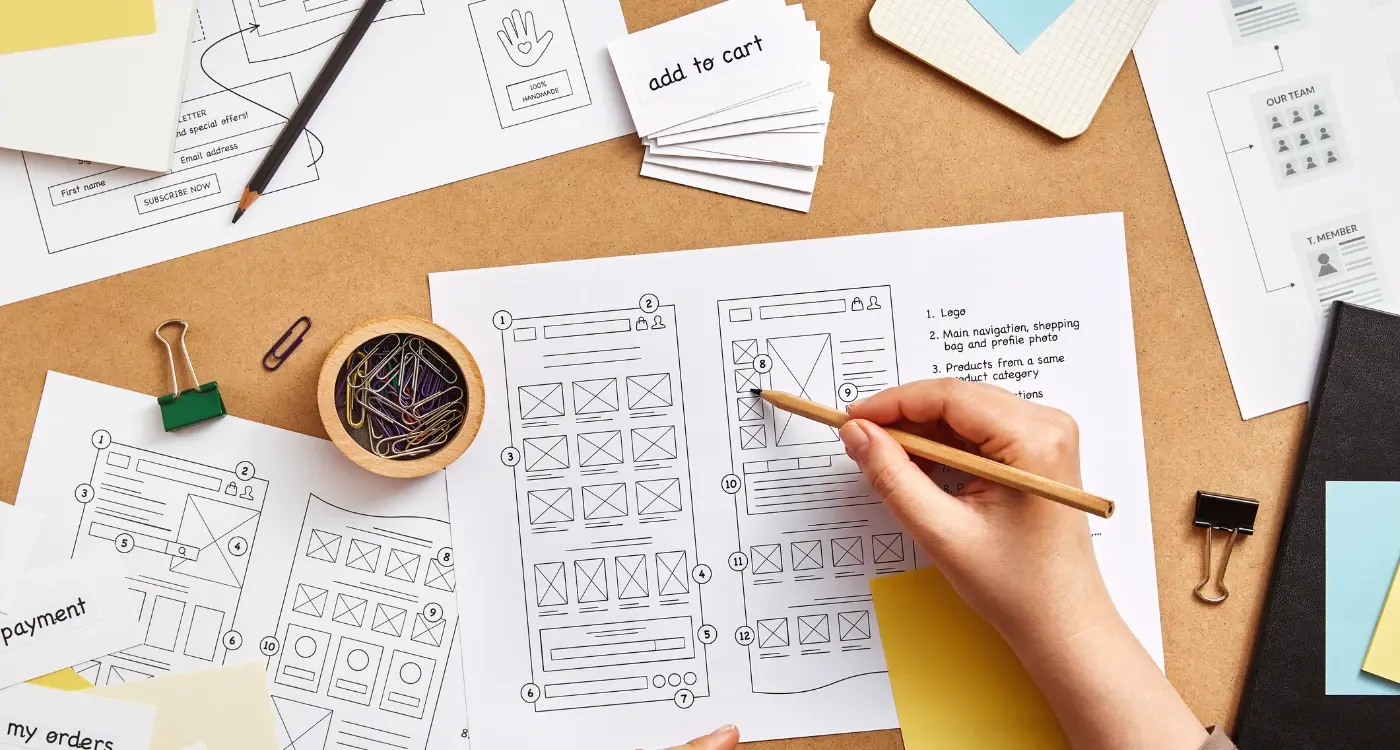How Do You Research Sensitive Topics Without Making Users Lie?
Most users will give you completely false information when you ask about sensitive topics—and they're not even doing it on purpose. The moment someone feels uncomfortable about a question, their brain automatically switches to "socially acceptable answer mode" rather than honest mode. This happens whether you're asking about personal finances, health issues, or even something as simple as their actual app usage patterns.
After years of conducting user research for apps dealing with everything from mental health to financial services, I've learned that the traditional "just ask them directly" approach is basically useless when it comes to sensitive research topics. Users will tell you what they think you want to hear, or what makes them look good, rather than the truth. And honestly? You can't blame them for it.
The thing is, sensitive topics are often the most important ones to get right. If you're building a health app, you need to know about people's real struggles with medication adherence—not the sanitised version they think sounds responsible. If you're creating a financial planning tool, you need honest feedback about people's actual spending habits, not their aspirational ones.
Getting honest answers about sensitive topics isn't about asking better questions—it's about creating an environment where users feel safe enough to tell you the truth
The good news is that there are proven techniques for getting past these barriers. It requires rethinking how we approach user interviews, what environments we create, and sometimes even who does the asking. But when you get it right, the insights you'll gain will be worth their weight in gold.
Why Sensitive Topics Make Users Uncomfortable
Let's be honest here—when someone starts asking personal questions, our natural instinct is to put up walls. I've seen this happen countless times when researching apps dealing with mental health, financial struggles, or relationship issues. Users suddenly become very different people when they think they're being judged.
The thing is, people aren't trying to be difficult; they're just protecting themselves. Think about it—would you tell a stranger about your debt problems or anxiety issues? Probably not. And that's exactly what app research can feel like to users if we don't handle it properly.
The Psychology Behind User Defensiveness
When we touch on sensitive subjects, users start worrying about a few key things. They're concerned about privacy (where will this information go?), judgment (what will the researcher think of me?), and consequences (could this come back to hurt me?). These aren't unreasonable fears, actually—they're quite sensible.
I've noticed that users also tend to give socially acceptable answers rather than truthful ones. Ask someone about their spending habits and they'll tell you about their sensible purchases, not the impulse buys they regret. It's not malicious; it's just human nature.
Common Sensitive Areas in App Research
Some topics are obviously sensitive, but others might surprise you. Here's what typically makes users uncomfortable:
- Personal finances and debt management
- Health conditions and medical history
- Relationship problems or dating experiences
- Work stress and career dissatisfaction
- Parenting challenges and family conflicts
- Addiction or habit-breaking attempts
- Body image and fitness struggles
The key thing I've learned is that sensitivity isn't always obvious. Even seemingly innocent topics like productivity apps can touch on personal insecurities about time management or professional competence. You need to approach every research session with empathy and awareness.
Building Trust Before You Ask
Trust doesn't happen overnight—and when you're dealing with sensitive research topics, users need to feel completely safe before they'll give you honest feedback. I've seen too many research sessions go sideways because we jumped straight into the heavy questions without laying proper groundwork first.
The key is starting small and building rapport gradually. Begin your user interviews with easy, non-threatening questions about general app usage or preferences. Let users get comfortable with your voice, your style, and the rhythm of the conversation. This isn't just small talk—it's strategic relationship building that pays dividends when you need honest answers about difficult topics.
Transparency About Your Process
Users need to understand exactly how their information will be used, who will see it, and what safeguards are in place. Don't bury this in legal jargon; explain it like you're talking to a friend. "We're recording this conversation so I don't miss anything important, but only my research team will hear it, and we'll delete it once we've analysed the insights."
Actually, one of the most powerful trust-building techniques I use is admitting when topics might feel uncomfortable. Saying something like "I know some of these questions might feel a bit personal, and that's completely normal" gives users permission to feel hesitant—and paradoxically makes them more likely to open up.
Share your own credentials and experience with sensitive research at the start of each session. Users are more likely to trust someone who clearly knows what they're doing and has handled similar conversations before.
Remember, trust is fragile. One wrong move, one pushy question asked too early, and you've lost the user's confidence completely. Take your time with this foundation—your research quality depends on it.
Creating Safe Research Environments
The physical and digital spaces where you conduct research matter more than most people realise. I've seen brilliant research questions get terrible answers simply because the environment felt wrong to participants. It's a bit mad really—you can spend weeks crafting the perfect questions, but if someone feels exposed or judged, they'll give you what they think you want to hear instead of the truth.
When dealing with sensitive topics, your research environment needs to signal safety from the moment someone walks in or logs on. This means thinking about everything from lighting and seating arrangements to the colours on your screen and the tone of your welcome message. I always tell clients: if you wouldn't feel comfortable sharing something personal in this space, why would your users?
Physical Space Considerations
For in-person research, neutral locations work better than corporate offices. Coffee shops can be good, but they lack privacy. Dedicated research facilities are ideal, but if you can't afford them, even a quiet corner of a library beats a sterile meeting room with glass walls where people can see in.
- Choose private spaces with minimal distractions
- Ensure comfortable seating that doesn't feel formal
- Remove or cover company branding that might influence responses
- Have tissues available—sensitive topics sometimes trigger emotions
- Provide water and let people know they can take breaks
Digital Environment Setup
Online research environments need just as much thought. The platform you choose sends a message. A professional survey tool feels more trustworthy than a generic form. Clear privacy statements visible throughout the process help users feel secure.
Remember, people are sharing personal information on devices they use for everything else. Make sure your research doesn't feel intrusive or permanent—many participants worry about data being stored forever or shared with others.
Question Techniques That Actually Work
The way you ask questions about sensitive research topics can make or break your entire study. I've seen brilliant research projects crumble because the questioning approach made users clam up or give answers they thought we wanted to hear—and honestly, it's heartbreaking when months of work goes down the drain like that.
Start with the indirect approach. Instead of asking "Do you feel embarrassed about your financial situation?" try "What emotions do people typically experience when managing money?" This third-person framing gives users permission to share without admitting its personal. They can project their feelings onto "other people" whilst actually telling you about themselves.
The Scaling Method
Numbers feel safer than words for sensitive topics. Rather than asking someone to describe their anxiety levels, present a scale: "On a scale of 1-10, how comfortable do you feel discussing personal finances with family?" People find it easier to say "3" than to admit they're terrified of money conversations.
The best sensitive research questions don't feel sensitive at all—they feel like natural conversations about universal human experiences
Another technique that works brilliantly is the "completion" method. Give users scenarios to complete: "Sarah opens her banking app and sees her balance. She feels..." This storytelling approach lets people share genuine emotions without the vulnerability of direct admission.
Timing Your Sensitive Questions
Never lead with your most sensitive questions. Build rapport first—ask about their general app usage, their daily routines, their preferences. Once they're comfortable talking to you, they'll be more open about the difficult stuff. And here's something most researchers get wrong: always end interviews on a positive note, not with your heaviest question.
Using Indirect Research Methods
Sometimes the best way to learn about sensitive topics is to not ask about them directly. I mean, if you want to know why people abandon their fitness apps after two weeks, asking "Why did you give up on your health goals?" is going to make people defensive. Instead, you need to get clever with your approach.
One method that works brilliantly is projective research—basically asking people what they think others would do in similar situations. "What do you think stops most people from sticking with fitness apps?" gets you the same insights without making users feel judged. People are surprisingly honest when they're talking about "other people" even though they're really describing themselves.
Observational Research Methods
Analytics tell stories that users wont. I've seen apps where users claimed they loved a feature in interviews, but the data showed they never actually used it. Heat mapping, user session recordings, and behavioural analytics give you the unfiltered truth about what people actually do versus what they say they do.
Card sorting exercises work well too—ask users to categorise scenarios or features without directly discussing their personal experiences. It reveals their mental models and priorities without the emotional baggage that comes with direct questioning.
Research Through Storytelling
Here's something I've found really effective: ask users to create personas or tell stories about fictional characters using your app. They'll project their own experiences, fears, and motivations onto these made-up people, giving you genuine insights wrapped in a safe fictional package.
- Use scenario-based questions about hypothetical users
- Ask participants to role-play different user types
- Create fictional case studies for users to respond to
- Use third-person questioning techniques
- Analyse behavioural data alongside stated preferences
The key is making people comfortable enough to share honest feedback without feeling like they're exposing their personal struggles or embarrassing habits.
The Role of Anonymity and Privacy
Right, let's talk about the elephant in the room—nobody's going to open up about sensitive stuff if they think it'll come back to bite them later. I've seen so many research projects fail because teams didn't take anonymity seriously enough. It's not just about saying "this is anonymous" and hoping for the best.
True anonymity means users genuinely cannot be identified from their responses. That's harder than it sounds in our connected world where everything leaves digital footprints. When I'm working on research for apps dealing with health, finance, or personal habits, I make sure we're collecting the absolute minimum data needed to get useful insights.
Building Bulletproof Privacy Systems
Here's what actually works: separate your research data from any identifiable information right from the start. Use random ID numbers instead of names or email addresses; store responses on secure servers that aren't connected to your main user database. And honestly? Sometimes the best approach is to not collect identifying information at all.
Always explain exactly how you're protecting privacy before asking sensitive questions. Users need to understand what "anonymous" actually means in your context.
One thing that's worked brilliantly for me is giving users control over their privacy level. Let them choose whether they want to be completely anonymous, partially identifiable for follow-up questions, or fully identified. You'd be surprised how many people will share sensitive information when they feel they're in control of their privacy.
- Use encrypted data storage for all research responses
- Implement automatic data deletion after research completion
- Provide clear opt-out mechanisms at any stage
- Never link research data to user accounts or marketing databases
- Consider using third-party research platforms for extra separation
The bottom line? Privacy isn't just about following regulations—it's about creating an environment where people feel safe enough to tell you the truth about things that matter to them.
Reading Between the Lines
Sometimes what users don't say is more important than what they do. After years of conducting user research on sensitive topics—from mental health apps to financial struggles—I've learned that the real insights often hide in the spaces between words.
Body language tells stories that words can't. When someone fidgets while discussing their spending habits or suddenly speaks faster when talking about their health concerns, they're giving you valuable information. In remote interviews, watch for changes in tone, long pauses, or when people suddenly become very formal in their language. These shifts usually signal you've hit something important.
What Silence Really Means
Don't rush to fill awkward silences. I mean, it feels uncomfortable, but that pause might be someone wrestling with whether to share something personal. Give them space. Count to ten slowly before moving on. You'd be surprised how often people use that time to open up about what's really bothering them.
Listen for what I call "hedge words"—phrases like "I suppose," "maybe," or "kind of." These often indicate uncertainty or discomfort with the topic. When someone says "I guess I'm okay with sharing my data," they're probably not okay with it at all.
Patterns in the Data
Look for patterns across multiple users rather than focusing on individual responses. If several people give you similar non-answers or deflect in the same way, that's your real finding right there.
- Notice when users change the subject quickly
- Pay attention to overly positive responses (they might be hiding concerns)
- Watch for contradictions between what they say and how they say it
- Look for topics that make people speak in generalities rather than personal examples
The key is building a picture from multiple data points. One person being evasive might just be having a bad day; ten people being evasive about the same topic? That's your research goldmine.
When to Use External Research Partners
Sometimes, no matter how much trust you build or how carefully you craft your questions, users just won't open up. That's when bringing in external research partners can be a game changer—and I mean that literally, not in the overused marketing sense.
I've seen this work particularly well with healthcare apps dealing with mental health topics. Users were reluctant to discuss their anxiety or depression symptoms with our internal team, probably because they worried about how that information might influence the app's development. But when we brought in a specialist research agency with healthcare experience, the quality of feedback improved dramatically overnight.
The Independence Factor
External researchers offer something you can't: complete independence from your product. Users know these researchers aren't going to take their feedback personally or use it to make decisions that might affect the app in ways they don't want. It's like having a neutral third party facilitate the conversation.
Financial services is another area where external partners really shine. When we were working on a budgeting app, users were much more comfortable discussing their spending habits and debt with researchers who had no connection to the company. They felt safer sharing embarrassing financial mistakes or admitting to poor money management.
The best external research partnerships happen when you find specialists who understand both your industry and your users' specific concerns
But here's the thing—external research isn't cheap, and you need to choose your partners carefully. Look for agencies that specialise in your sector and have experience with sensitive research topics. The investment pays off when you get insights that would have been impossible to gather internally, but only if you pick the right team for the job.
After years of building apps that require users to share personal information—from health tracking apps to financial platforms—I've learned that researching sensitive topics isn't just about asking the right questions. It's about creating the right environment for honest answers.
The methods we've covered in this guide work because they respect a simple truth: people want to help, but they also want to feel safe. When we use indirect questioning techniques, anonymous feedback systems, and third-party research partners, we're not being sneaky—we're being considerate. We're acknowledging that some topics are genuinely difficult to discuss and providing multiple pathways for users to share their experiences.
Building trust doesn't happen overnight. I've seen countless projects where teams rushed into asking personal questions without laying the groundwork first. They ended up with sanitised responses that looked good on paper but didn't reflect reality. The apps built from this flawed research inevitably struggled because they solved the wrong problems or addressed them in the wrong way.
Remember, you don't need perfect data to build great apps—you need honest data. Sometimes that means accepting that certain information will always be incomplete or require reading between the lines. That's not a weakness in your research; it's a recognition of human nature.
The best research happens when users forget they're being researched. When they feel comfortable enough to share their real struggles, their actual behaviours, and their genuine needs. That level of comfort comes from demonstrating that you understand the weight of what you're asking and that you've taken steps to protect their vulnerability.
Start small, build trust gradually, and always be transparent about why you need to know what you're asking. Your users—and your app—will benefit from the authentic insights that follow.
Share this
Subscribe To Our Learning Centre
You May Also Like
These Related Guides

What Are the Best Methods for Conducting User Research?

What's The Difference Between Usability Testing And User Testing?



